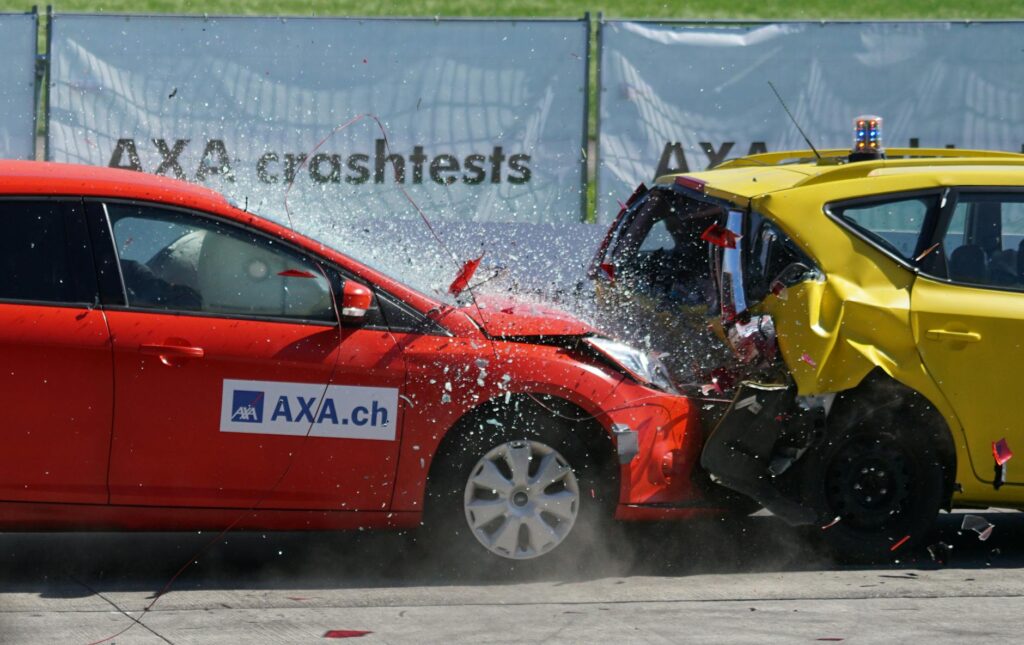Table of Contents
- Introduction
- Common Causes of Rear-End Accidents
- Fault Determination in Rear-End Collisions
- Legal Perspectives on Rear-End Accidents
- Prevention Tips to Avoid Rear-End Collisions
- Types of Damages and Compensation
- How Police Reports Affect Fault Determination
- Final Thoughts
Introduction
Rear-end accidents are one of the most ubiquitous types of vehicle collisions, occurring frequently in both urban and rural settings. These incidents can result in significant injuries ranging from whiplash to more severe conditions like spinal injuries, not to mention the extensive vehicle damage that often follows. Though is this truly the case? It’s a prevalent notion that the rear driver is always at fault. This article delves into the complexities surrounding fault determination in rear-end accidents to shed light on who is truly liable. For more detailed information and some insightful case studies, you might wonder are rear ends always at fault and find out more from professionals in the field.
Common Causes of Rear-End Accidents
Multiple factors can lead to a rear-end collision, and understanding these can help mitigate the risk. Some of the most prevalent causes include:
- Driver distraction: Engaging in activities like texting, talking on the phone, or even adjusting the car’s infotainment system can divert attention from the road, increasing the likelihood of a rear-end collision.
- Sudden braking: Abrupt stops can catch the driver behind off guard, particularly if they follow too closely. This is especially dangerous in high-speed conditions.
- Adverse weather conditions: Rain, snow, or fog can impair visibility and reduce the effectiveness of braking. Wet roads, particularly, can cause vehicles to skid, leading to unforeseen accidents.
- Mechanical failures: Issues like brake failures or tire blowouts can suddenly hinder a car’s maneuverability, leaving the driver unable to avoid an impending collision.
Drivers can better understand and modify their driving patterns to prevent possible accidents by keeping these elements in mind.
Fault Determination in Rear-End Collisions
Determining fault in a rear-end collision involves a detailed assessment of various elements, such as the speed of both vehicles, traffic conditions at the time, and the behaviors exhibited by the drivers involved. For instance, was the lead driver signaling appropriately before making a stop? Was the rear driver maintaining a safe following distance, or were they tailgating? Such questions are pivotal in the evaluation process. Insurance companies and legal authorities often rely on eyewitness accounts, traffic camera footage, and expert opinions to draw conclusions regarding fault.
Legal Perspectives on Rear-End Accidents
While laws often assume that the rear driver is at fault in rear-end collisions, this isn’t an absolute rule. Legal professionals must scrutinize the accident’s context to arrive at a just conclusion. Situations where the lead driver might share fault include “brake checking” without cause or failing to signal before turning or stopping. According to accident liability courts, fault determination can vary significantly depending on jurisdiction and specific case details. Therefore, neither driver should blindly assume they are free from blame without a thorough legal assessment.
Prevention Tips to Avoid Rear-End Collisions
Taking preventive measures can drastically reduce the risk of rear-end accidents. Here are some actionable tips to help you stay safe:
- Maintain a safe following distance: Tailgating severely reduces reaction time and increases the likelihood of a collision if the vehicle ahead makes a sudden stop.
- Stay alert and minimize distractions: Focusing solely on the road can help you anticipate sudden stops and changes in traffic flow, giving you the precious seconds needed to react appropriately.
- Regularly check your brakes and tires: Ensuring that your vehicle is in optimal condition can prevent unforeseen mechanical failures that could lead to accidents.
- Adhere to speed limits: Following road regulations ensures a consistent traffic flow, reducing abrupt speed changes and the potential for collisions.
You and other drivers can both benefit greatly from using these preventive actions to ensure road safety.
Types of Damages and Compensation
Victims of rear-end accidents may be eligible for various types of damages and compensations, especially if the incident results in long-term injuries or significant financial burdens. Common compensations include:
- Medical expenses: This covers hospital bills, surgeries, medications, and any rehabilitation costs incurred as a result of the accident.
- Property damage: This compensation aims to repair or replace the damaged vehicle, ensuring that the victim doesn’t suffer financially from vehicle loss.
- Pain and suffering: This type of payment is meant to make up for the mental and physical pain that the accident caused.
- Lost wages: If the accident renders a victim unable to work, they may be compensated for the income lost during the recovery period.
Understanding the types of compensation you’re eligible for can help you better navigate the aftermath of an accident.
How Police Reports Affect Fault Determination
An important factor in establishing fault is the police report. They provide an official report on the collision that includes witness statements, scene sketches, and information on any infractions according to the traffic code. According to Forbes Advisor, having a police report can significantly impact the outcome of insurance claims and legal proceedings. These reports serve as critical evidentiary documents, often being a decisive factor in establishing fault and aiding in resolving disputes.
Final Thoughts
Rear-end accidents are commonly perceived as straightforward, but fault determination involves numerous factors that must be carefully evaluated. By staying informed about common causes and preventive measures, drivers can enhance their safety on the road and be better prepared to handle these situations should they arise. Understanding the intricacies of fault determination can also help drivers protect their rights and interests in the aftermath of an accident.

